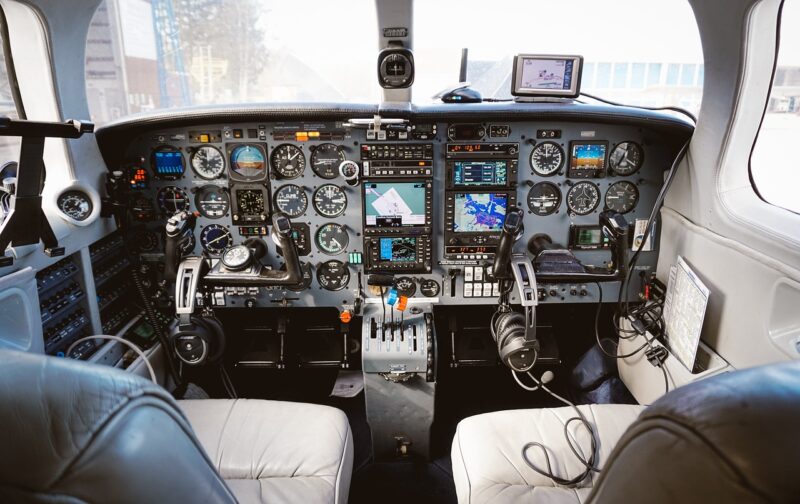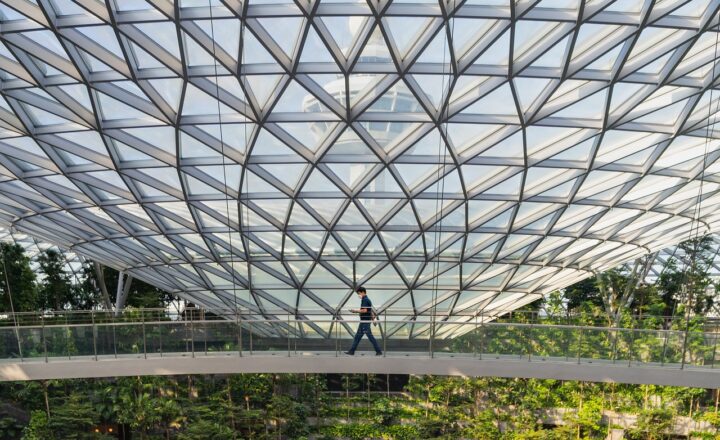The Innovations Behind Airplane Cabins and How They’re Built for Comfort
November 11, 2024

Air travel has transformed the way we connect globally, but it’s not just the convenience of flying that makes it appealing. The innovation behind airplane cabins has significantly enhanced the passenger experience, prioritizing comfort, safety, and technology. Today’s airliners are designed not only with functionality in mind but also to create a pleasant environment for travelers, from the moment they board to the time they disembark. In this article, we will explore the various innovations in airplane cabin design and how they contribute to passenger comfort.
1. The Evolution of Airplane Cabin Design
The history of airplane cabin design dates back to the early days of aviation when comfort was secondary to speed and efficiency. The first commercial flights in the 1920s had minimal amenities — think cramped seats and noisy engines. However, as air travel became more popular, airlines began to recognize the importance of passenger comfort.
Significant milestones include:
- Introduction of Pressurized Cabins: In the late 1930s, the introduction of pressurized cabins allowed planes to fly at higher altitudes while ensuring that passengers could breathe comfortably without supplemental oxygen. This innovation paved the way for long-haul flights, opening up new routes and destinations across the globe.
- The Development of First-Class Cabins: The 1950s and 1960s saw the emergence of first-class seating, providing extra legroom and luxurious amenities. Airlines began offering gourmet meals, spacious seating arrangements, and personalized service for high-paying customers, thus setting new standards in comfort.
- Incorporation of Technology: The late 20th century witnessed rapid technological advancements, including in-flight entertainment systems, mood lighting, and sophisticated noise-canceling designs that enhance passenger comfort and enjoyment during flights.
As we continue into the 21st century, airlines are investing in innovative designs that prioritize traveler comfort.
2. Modern Seating Innovations
One of the most critical aspects of cabin comfort is seating. Airlines are constantly reinventing cabin layouts and seat designs to improve the passenger experience. Some key innovations include:
- Ergonomic Seating: Modern seats are designed to support the body more effectively, incorporating better lumbar support and adjustable headrests. This helps reduce discomfort, particularly on long-haul flights where passengers can spend many hours seated.
- Adjustable Living Spaces: Airlines have introduced innovative seating arrangements, such as lie-flat seats in business and first class that allow passengers to recline fully and enjoy a restful sleep. Some airlines also offer custom configurations, allowing travelers to create a more personalized space by rearranging adjacent seating.
- Accessibility Features: Modern airplane designs emphasize accessibility, incorporating wider aisles, adjustable armrests, and designated spaces for passengers with disabilities. This ensures that air travel is comfortable and accessible to everyone, regardless of their physical needs.
With these innovations, airlines are reimagining what it means to fly comfortably.
3. Cabin Atmosphere and Environment
Creating a comfortable cabin environment goes beyond just seating. Factors like cabin pressure, temperature, humidity, and air quality also play significant roles in enhancing the passenger experience. Recent developments include:
- Improved Air Quality Control: Modern airliners use advanced filtration systems that ensure high air quality throughout the flight. Innovations in air circulation systems help maintain a steady flow of fresh air and minimize the spread of airborne pathogens, making travel healthier and more enjoyable for passengers.
- Mood Lighting: Airlines have adopted LED mood lighting systems that can adjust throughout the flight to create a more relaxing atmosphere. Different hues can be employed to mimic natural sunlight or create an ambiance conducive to sleep, thereby reducing the fatigue often associated with flying.
- Noise-Reducing Technologies: Innovations in cabin insulation and noise-canceling materials help create a quieter environment onboard, minimizing the distraction of engine noise. Many premium cabin designs incorporate these technologies, enhancing overall comfort and relaxation during the flight.
With these elements in harmony, passengers can often forget they are soaring miles above the ground.
4. In-Flight Entertainment and Connectivity
To keep passengers engaged and comfortable during long flights, airlines are improving in-flight entertainment and connectivity options. Some noteworthy advancements include:
- High-Definition Seatback Screens: Airlines are outfitting their cabins with larger, high-definition screens that can provide a wide range of content options, from movies and TV shows to documentaries and games. This enhances the enjoyment of the flight and provides ample entertainment during layovers or delays.
- Wi-Fi Connectivity: The ability to connect to Wi-Fi during flights has changed how passengers work and relax while traveling. Many airlines now offer complimentary or paid Wi-Fi services, allowing passengers to stay connected to family, friends, and work while in the air.
- Streaming Services: Some airlines collaborate with popular streaming services to offer a wider content library directly to passengers’ devices. This provides travelers with even more options and increases the overall satisfaction of the flight experience.
In-flight entertainment systems keep passengers engaged, ultimately contributing to a more pleasant experience during their journey.
5. Future Innovations and Trends
Looking ahead, several trends are set to shape the future of airplane cabin design. Innovations to watch for include:
- Sustainable Materials: Airlines are increasingly focused on using sustainable materials in cabin construction, from recycled plastics to organic textiles. This trend not only aligns with global sustainability efforts but also appeals to eco-conscious travelers.
- Personalized Cabin Experiences: With the rise of technology, airlines are exploring ways to offer personalized cabin experiences, such as adjustable ambient lighting based on individual preferences, or personalized entertainment options tailored to the traveler’s tastes and inquiries.
- Augmented Reality Features: Future innovations may see the integration of augmented reality (AR) into in-flight entertainment, allowing passengers to experience interactive applications, from learning about flight paths to exploring destination information before landing.
These upcoming trends signal an exciting evolution in how cabin design prioritizes passenger comfort and engagement in the coming years.
Conclusion
Innovations in airplane designers are pivotal in enhancing passenger comfort during flights. From ergonomic seating to advanced cabin technologies, the aviation industry consistently seeks ways to elevate the travel experience. As these advancements continue to unfold, passengers can look forward to not just the journey but an enjoyable and comfortable environment throughout their flight. With the pace of change in air travel, the sky is not the limit — it’s merely the beginning of what’s possible in airline comfort yet to come.








